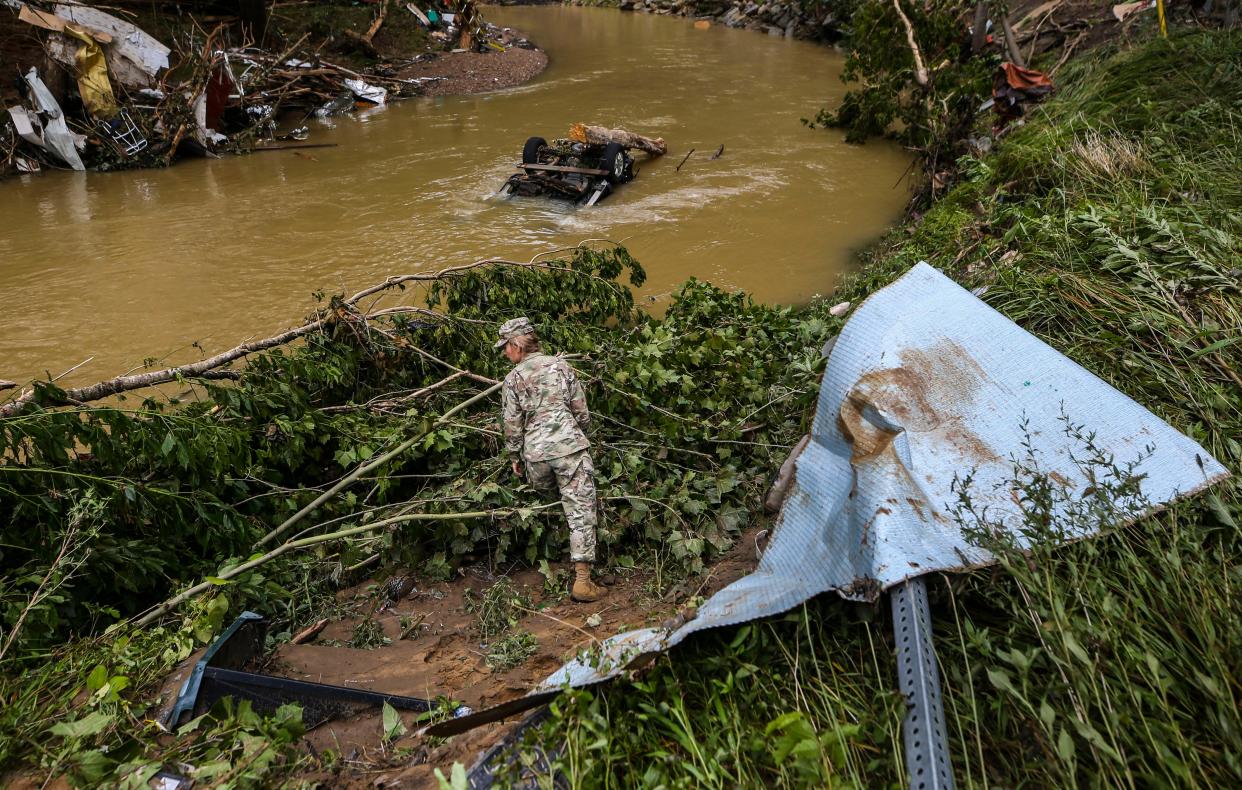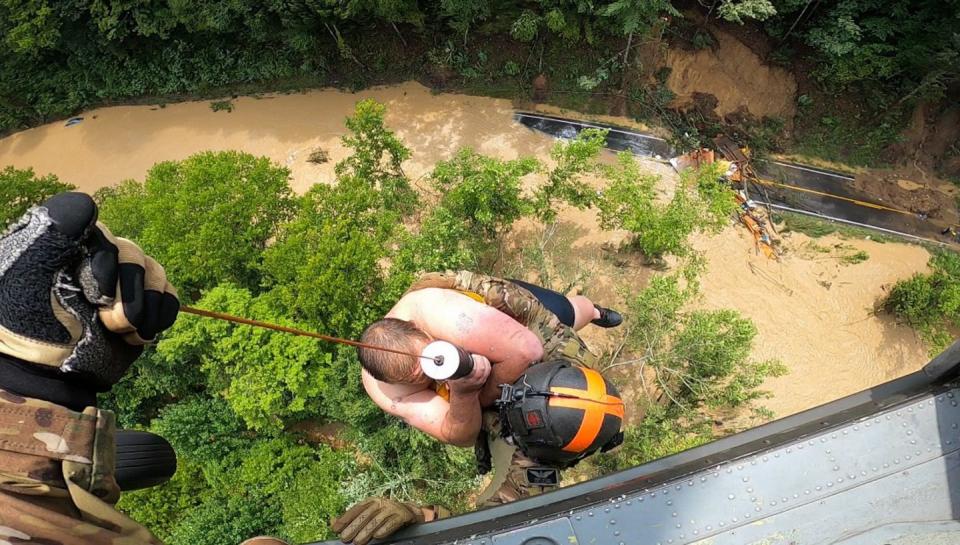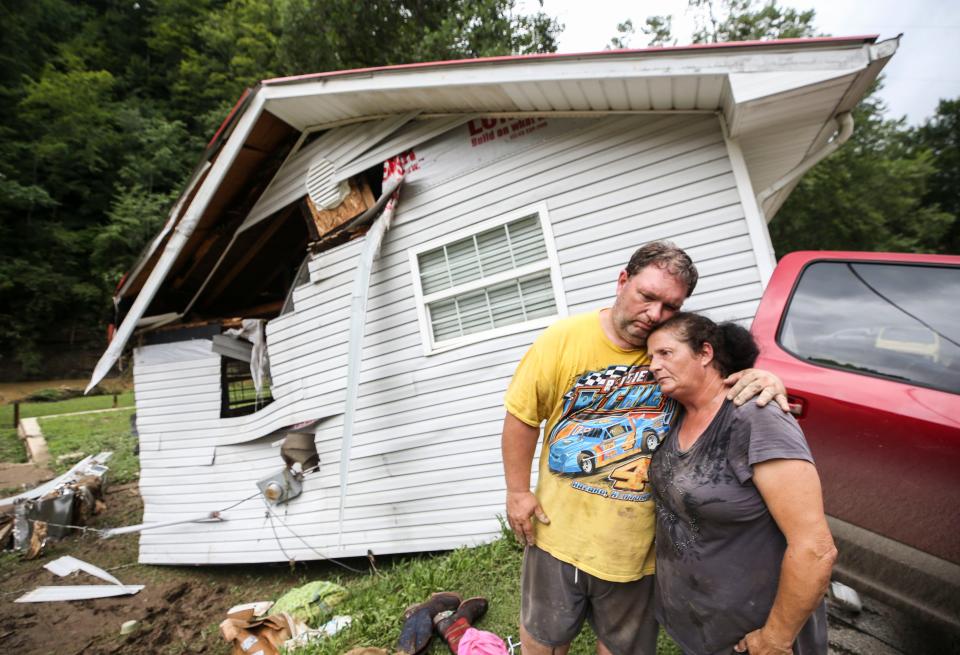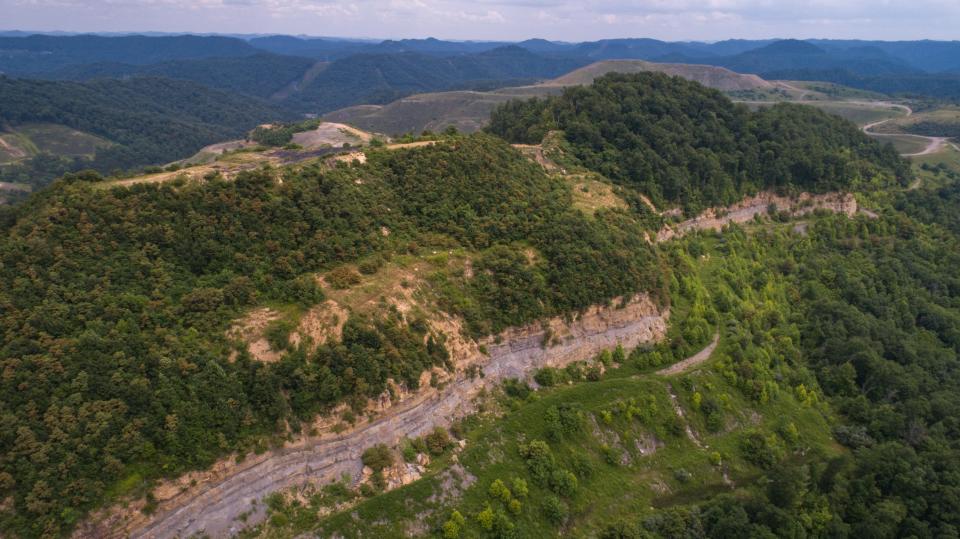Did coal mining play a role in 2022 Kentucky flood deaths? Group wants feds to investigate

Half a year after historic floods killed dozens in Eastern Kentucky, Kentuckians For The Commonwealth is calling on federal officials to investigate the role of surface mining in those deaths, citing inaction from the state.
Their letter, addressed to Secretary Deb Haaland of the Department of the Interior, among others, pointed out the proximity of 35 flood-related deaths, and one missing person, to land that has been used for mining. Even after reclamation, strip-mined land often cannot absorb flood runoff as it would naturally.
For subscribers:'I can't do it again': Can Kentucky blunt worsening flooding and save towns and homes?
What happened in the floods last summer?
In the early hours of July 28, 2022, torrential rainfall caused flash flooding in several Eastern Kentucky counties. Up to 16 inches of rain over just five days lifted the region's rivers to record levels. In some places, 4 inches of rain were documented in a single hour.
The rain hadn't stopped by the time helicopters started airlifting victims off their roofs, and the National Guard joined local authorities in sifting through the rubble. At least 44 deaths have been attributed to the floods by the governor's office, and thousands of homes were damaged or destroyed.

What does KFTC's letter say?
In addition to documenting deaths near surface mining, KFTC's letter to federal authorities alleges failures under the Surface Mining Control and Reclamation Act of 1977, which was designed to protect human and environmental health from the effects of coal mining. It calls for a federal investigation of the Kentucky Department of Mine Reclamation and Enforcement's implementation of SMCRA.
More:Breathitt County residents file suit alleging strip mining made flood damage worse
KFTC also accuses the department of failing to properly investigate complaints and requests for inspection, even after Eastern Kentuckians filed more than 100 of them with the regional office in Hazard after the floods hit.
KFTC is a statewide, grassroots organization involving 12,000 members, according to the group.
"Federal assistance and oversight is urgently needed," KFTC said in the letter, "because the Kentucky DMRE doesn’t seem capable of giving a full accounting of citizen complaints, much less responding to them meaningfully."
What does the state say?
In response to the letter, the state cited its extensive work on the ground in the hours and days following the floods, and said the Division of Abandoned Mine Lands responded to 400 complaints of flooded areas in the months after.
"The Kentucky Energy and Environment Cabinet would welcome any Department of the Interior (DOI) analysis of any surface mining contribution to the flooding," the cabinet said in a statement Monday, adding that the state is in touch with the federal Office of Surface Mining Reclamation & Enforcement "almost daily," and "has received frequent positive feedback on its oversight of Kentucky mining operations."

What does science say about the floods?
In addition to the remarkable amount of downpour, some characteristics specific to Eastern Kentucky made it particularly vulnerable to the devastation.
More:'Warmer and wetter': US' changing climate helps fuel record Kentucky flooding, experts say
Many residences in the region sit deep in flood plains, along winding creeks and surrounded by the steep Appalachian foothills. This pinches Eastern Kentuckians between nearby rising rivers and the runoff coming down from rugged topography.
Further, much of that topography has been ravaged by decades or more of strip mining.

More:4 charts show how Kentucky's natural disasters are becoming more common. And expensive
Connor Giffin is an environmental reporter for The Courier Journal and a corps member with Report for America, a national service program that places journalists in local newsrooms to report on under-covered issues. The program funds up to half of corps members’ salaries, but requires a portion also be raised through local community fundraising. To support local environmental reporting in Kentucky, tax-deductible donations can be made at courier-journal.com/RFA.
Learn more about RFA at reportforamerica.org. Reach Connor directly at cgiffin@gannett.com or on Twitter @byconnorgiffin.
This article originally appeared on Louisville Courier Journal: Group wants investigation of coal mining role in Kentucky flood deaths

